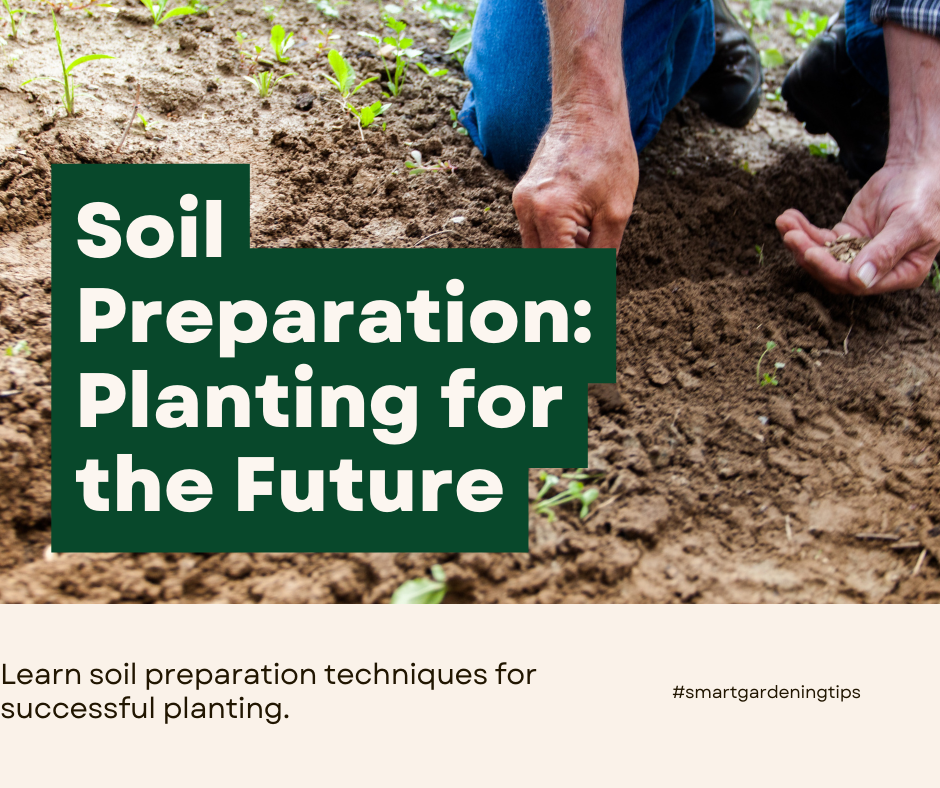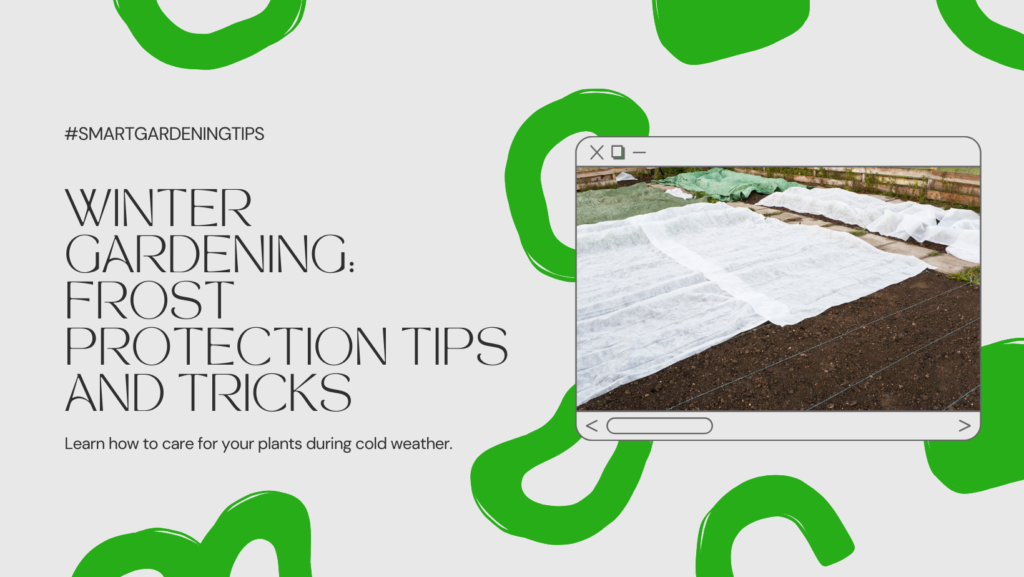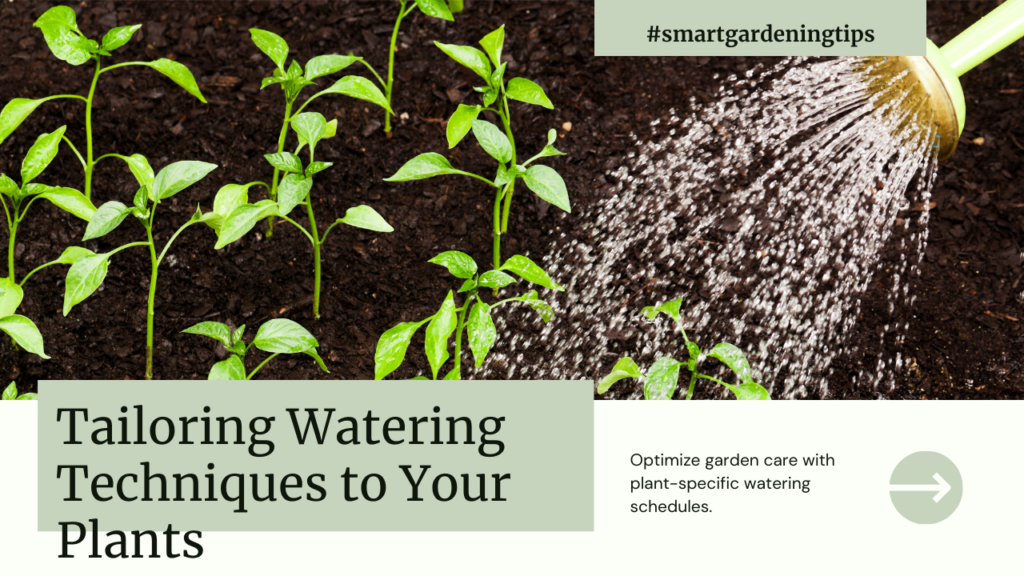
Welcome to the ultimate guide on how to prepare your garden for the autumn season! As the cooler months approach, it’s essential to ensure that your garden is ready to thrive in the changing weather. By taking the necessary steps now, you can enjoy a vibrant and healthy garden throughout autumn.
Key Takeaways:
- Assess the current state of your garden to determine its needs for autumn preparation.
- Improve soil quality and nutrient content to support optimal plant growth during cooler temperatures.
- Prune shrubs and trees and clean up debris to maintain the overall health of your garden.
- Choose and care for autumn-friendly crops and flowers that thrive in cooler weather.
- Implement proper soil preparation techniques for new plantings in autumn.
Assessing Your Garden’s Needs for Autumn
Before you begin the autumn garden preparation, take the time to assess the needs of your garden. Paying attention to the health and growth of your plants will provide valuable insights into the appropriate actions required for the upcoming season.
Start by closely observing each plant in your garden. Look for any signs of distress, such as wilting leaves, discoloration, or pest infestations. Your plants’ health is crucial to their ability to withstand the cooler months ahead and continue growing.
Take note of any plants that have experienced stunted growth or lackluster foliage. These indicators may suggest nutrient deficiencies or environmental factors affecting their overall health. Assessing plant health and growth is essential for maintaining a vibrant and thriving garden throughout autumn.
“Assessing the needs of your garden is the first step towards a successful autumn garden prep.”
In addition to evaluating the individual plants, consider the overall layout and design of your garden. Are there any areas that need particular attention? Are certain plants overcrowded and in need of proper spacing? Assessing your garden as a whole will help you identify potential issues and plan for necessary changes.
By carefully assessing the needs and requirements of your garden, you can create a tailored and effective autumn garden prep plan. This will ensure that your plants have the best opportunity for continued health, growth, and beauty throughout the season.
To visualize the process of assessing your garden’s needs, refer to the table below for a comprehensive checklist:
| Assessment Checklist for Garden Needs |
|---|
| Observe individual plants for signs of distress, such as wilting leaves or pest infestations. |
| Take note of any plants with stunted growth or lackluster foliage. |
| Evaluate the overall layout and design of the garden for potential issues. |
| Identify areas that need attention or plants that require proper spacing. |
Assessment Checklist for Garden Needs
Understanding Soil Quality and Nutrients
When it comes to successful gardening, soil quality is essential. The nutrient content of your soil plays a vital role in the growth and health of your plants. As you prepare your garden for autumn, it’s crucial to understand how to assess and improve the quality of your soil to ensure optimal plant growth during the cooler months.
Soil quality refers to the overall condition of the soil, including its physical, chemical, and biological properties. Assessing the soil quality in your garden is the first step in determining its nutrient content and identifying any deficiencies that need attention. A nutrient assessment enables you to understand the specific needs of your plants and ensure they receive the necessary elements for healthy development.
To assess your soil quality, consider conducting a soil test. This test will reveal important information such as the pH level, nutrient levels, and organic matter content of your soil. Soil preparation for autumn should take into account the nutrient deficiencies or imbalances identified in the test results.
Once you have the test results, you can take appropriate measures to improve soil quality and nutrient content. These may include adding organic matter, such as compost or well-rotted manure, to enhance soil structure and nutrient retention. Additionally, you can use organic fertilizers, like bone meal or fish emulsion, to supplement essential nutrients for your plants.
“Good soil, full of nutrients, is like a balanced diet for your plants. Just like we need a variety of nutrients to stay healthy, our plants need a diverse range of nutrients to thrive and produce abundant blooms and crops.”
H3: Importance of Soil Quality for Autumn Gardening
Understanding soil quality and nutrients is particularly important for autumn gardening. With the cooler temperatures and changing weather conditions, your plants rely on the nutrient reserves in the soil to sustain their growth. By ensuring the soil is rich in essential nutrients, you set the stage for vibrant growth and healthier plants throughout the autumn season.
“Healthy soil is the foundation of a successful garden. It provides the necessary nutrients and support for your plants to reach their full potential. By prioritizing soil quality and nutrient assessment, you’re giving your garden the best chance to thrive, even during the colder months.”
By focusing on soil quality and conducting thorough nutrient assessments, you can create an environment that supports robust plant growth and vibrant autumn blooms. Understanding the needs of your soil and taking the time to prepare it appropriately will set the stage for a successful autumn garden.
Pruning and Cleaning Up the Garden

As autumn approaches, it’s important to give your garden the care it needs to thrive during the cooler months. Pruning and cleaning up your garden before autumn is an essential task that contributes to its overall health and maintenance. By removing dead plants and debris, you create space for new growth and ensure that your garden remains visually appealing. Let’s explore some proper techniques for pruning shrubs and trees and clearing out unwanted elements from your garden.
Pruning Shrubs and Trees
Pruning is a crucial practice for keeping your shrubs and trees healthy and well-maintained. Start by assessing the condition of your plants and identify any dead, damaged, or diseased branches. Using clean and sharp pruning shears, make clean cuts just above a healthy bud or branch junction. This promotes proper healing and encourages new growth. Remember to prune branches that are crossing or rubbing against each other, as they can cause damage or hinder healthy growth.
Proper pruning techniques help improve the structure and appearance of your shrubs and trees while maintaining their health.
When pruning shrubs, consider their growth habits and desired shape. Some shrubs require minimal pruning, while others benefit from regular trimming to maintain their size and shape. Research the specific pruning requirements of the shrubs in your garden to ensure you achieve the desired results.
Clearing Out Debris and Dead Plants
Removing dead plants and debris from your garden not only enhances its aesthetics but also prevents the spread of disease and pests. Begin by clearing out fallen leaves, twigs, and any other organic debris that may have accumulated. You can use a rake or leaf blower to gather the debris and dispose of it properly. Remember to check underneath your shrubs and trees, as leaves and debris tend to accumulate in these areas.
Next, remove any dead plants that have completed their life cycle. These plants are no longer productive and can attract pests or diseases. Pull out the dead plants from the root, ensuring you remove all parts to prevent re-growth. Consider adding these dead plants to your compost pile, as they can contribute valuable organic matter for future use.
Caring for Your Tools
Proper garden maintenance also involves taking care of your tools. After pruning and cleaning up your garden, clean your tools thoroughly to prevent the spread of diseases. Remove any sap or debris from pruning shears, loppers, and saws using warm soapy water. Dry the tools completely to prevent rusting. You can also consider sharpening the blades of your tools to ensure clean and precise cuts for future pruning tasks.
Pruning and cleaning up your garden before autumn is an essential part of autumn garden maintenance. By following proper techniques for pruning shrubs and trees and clearing out debris and dead plants, you contribute to the overall health and visual appeal of your garden. This prepares it for the colder months ahead and ensures a fresh start for new growth and vibrant blooms in the coming seasons.
| Benefits of Pruning and Cleaning Up the Garden: |
|---|
| Enhances the overall health and appearance of your garden |
| Creates space for new growth and healthy development |
| Prevents the spread of diseases and pests |
| Improves air circulation and sunlight penetration |
| Allows for better access and maintenance of plants |
Planting Autumn-Friendly Crops and Flowers

When it comes to autumn gardening, choosing the right crops and flowers is essential for a successful harvest. By selecting cool-season vegetables and flowers, you can ensure that your garden thrives even as the temperatures drop. Here are some tips on planting autumn crops and selecting the perfect cool-season varieties.
Selecting Cool-Season Vegetables
Autumn is the perfect time to plant cool-season vegetables that can withstand cooler temperatures and even thrive in them. Some popular options include:
- Lettuce
- Spinach
- Kale
- Carrots
- Radishes
- Broccoli
These vegetables not only tolerate cooler temperatures but also benefit from them, as many cool-season crops become sweeter with frost exposure. Make sure to choose varieties that are specifically labeled as suitable for autumn planting.
Choosing Autumn Flowers
While many flowers wither away in the cooler months, there are several varieties that can add a pop of color to your autumn garden. Some popular autumn flowers include:
- Pansies
- Chrysanthemums
- Asters
- Marigolds
- Salvia
- Ornamental Cabbage
These flowers can withstand cooler temperatures and will continue to bloom well into the autumn season. They are an excellent choice for adding vibrancy and beauty to your garden during this time of year.
Caring for Cool-Season Plants
Once you’ve selected your cool-season vegetables and flowers, it’s important to provide them with the right care to ensure healthy growth. Here are some essential tips:
- Provide adequate water: While your plants won’t require as much water as they did during the hot summer months, they still need consistent moisture. Water deeply but less frequently to maintain a good balance.
- Protect from frost: As the temperatures drop, be prepared to protect your plants from frost. Use row covers or cloths to cover delicate vegetables and flowers overnight when frost is expected.
- Monitor for pests: Just because the weather is cooling down doesn’t mean pests won’t be an issue. Keep an eye out for any signs of pest activity and take appropriate action to protect your plants.
- Fertilize as needed: Cool-season plants benefit from a balanced fertilizer application. Follow the instructions on the fertilizer packaging to ensure you’re providing the right nutrients.
By following these care tips, you can enjoy a bountiful harvest of fresh vegetables and a colorful display of flowers throughout the autumn season.
Cool-Season Vegetables and Flowers
| Cool-Season Vegetables | Cool-Season Flowers |
|---|---|
| Lettuce | Pansies |
| Spinach | Chrysanthemums |
| Kale | Asters |
| Carrots | Marigolds |
| Radishes | Salvia |
| Broccoli | Ornamental Cabbage |
Preparing the Soil for New Plantings

When it comes to preparing your garden for new plantings in autumn, proper soil preparation is key to ensuring the success and growth of your crops. By implementing appropriate soil preparation techniques, you can create a favorable environment that promotes healthy root development and optimal nutrient absorption.
To begin, it’s essential to assess the current condition of your soil. Determine its texture, drainage capabilities, and nutrient content. This assessment will help you identify any deficiencies or imbalances that may hinder plant growth. Consider conducting a soil test to get accurate insights into its pH levels and nutrient composition.
Once you have a clear understanding of your soil’s needs, it’s time to amend the soil accordingly. Adding organic matter, such as compost or well-rotted manure, can improve soil structure and fertility. It also enhances the soil’s ability to retain moisture, which is crucial during the cooler months ahead.
When preparing the soil, ensure thorough mixing of the organic matter with the existing soil. This will help distribute the beneficial nutrients evenly and create an optimal growing medium for your autumn crops.
Consider using a garden fork or tiller to aerate the soil and break up any compacted areas. This process allows for improved root penetration and enhances water drainage, preventing waterlogging and potential root rot.
In addition to organic matter, consider incorporating a balanced fertilizer or soil amendments rich in essential nutrients. This helps replenish any deficiencies identified during the soil assessment. Follow the instructions provided by the manufacturer for proper application rates and methods.
Before planting, ensure that the soil is adequately moist. Water deeply to encourage healthy root development and to settle the soil amendments in place. Avoid overwatering, as it can lead to waterlogged conditions and oxygen deprivation for the roots.
Remember to follow specific planting guidelines for the crops you intend to grow in autumn. Some plants may require specific soil conditions, spacing, or depth for optimal growth. Take your time to read seed packets or consult reliable gardening resources for precise instructions.
By implementing these soil preparation techniques, you are setting the foundation for successful new plantings in your autumn garden. Creating a nutrient-rich, well-draining soil environment will support the growth and development of your crops, ensuring a bountiful harvest in the months to come.
Protecting Your Garden from Frost and Cold Weather
As the weather gets colder and winter approaches, it’s important to take steps in protecting your garden from frost and extreme temperatures. Frost can damage delicate plants and shrubs, leading to stunted growth or even death. By implementing effective methods and covering these vulnerable plants, you can safeguard your garden and ensure its survival during the chilly months ahead.
Understanding Frost and Its Effects on Plants
Frost occurs when temperatures drop below freezing, causing moisture in the air to condense and form ice crystals on surfaces. These ice crystals can damage plant cells and disrupt their normal functions. Delicate plants and shrubs are especially susceptible to frost damage and require extra care to survive.
When exposed to frost, plants may experience wilting, discoloration, and even death. However, with proper protection and preventative measures, you can minimize the impact of frost and preserve the health of your beloved garden.
Covering Delicate Plants and Shrubs

One effective method in protecting your garden from frost is by covering delicate plants and shrubs. This provides a barrier that traps heat and prevents direct contact with the freezing air. Follow these steps to cover your plants:
- Before nightfall, water the plants thoroughly. Moist soil retains heat better and helps protect the roots.
- Choose a suitable covering material, such as frost blankets, old bedsheets, or burlap sacks.
- During the evening, carefully drape the cover over the plants, ensuring it reaches the ground on all sides.
- Secure the cover in place using stakes or rocks, making sure it doesn’t blow away in strong winds.
Remember to remove the cover in the morning after temperatures rise above freezing to allow the plants to receive sunlight and fresh air.
Other Protective Measures
In addition to covering delicate plants, there are other protective measures you can take to safeguard your garden from frost:
- Mulching: Apply a layer of organic mulch, such as straw or wood chips, around the base of plants. This insulates the soil, maintains a more stable temperature, and helps retain moisture.
- Watering in the Evening: Watering your garden in the evening allows the plants to absorb moisture, which helps prevent dehydration and frost damage.
- Installing Frost-Resistant Plants: Consider planting frost-resistant varieties that can better withstand cold temperatures. Research suitable plants for your region and climate.
By combining these protective measures, you can effectively shield your garden from frost and ensure the well-being of your plants and shrubs throughout the winter season.
Image: Protecting delicate plants and shrubs from frost is crucial for their survival during the colder months.
Garden Maintenance and Watering

Proper garden maintenance and watering are essential for the overall health of your plants. During the autumn season, it’s important to adjust your gardening practices to ensure your plants thrive as the weather changes. Follow these helpful tips and recommendations to effectively manage watering schedules and maintain your garden during autumn.
1. Consider Watering Needs
As the temperature drops, the watering needs of your garden may change. Continuously monitor the moisture levels in the soil to determine when to water. Test the soil with your finger or a moisture meter to check for dryness. Remember that overwatering can be just as detrimental as underwatering, so aim for a balance.
2. Follow a Watering Schedule
Establishing a regular watering schedule can help ensure your plants receive adequate moisture without waterlogging the soil. In cooler weather, plants generally require less frequent watering compared to the summer months. Adjust your watering schedule accordingly, aiming for consistency and avoiding excessive or inconsistent watering.
3. Water Deeply and Infrequently
When you do water your garden, water deeply at the base of the plants. This promotes deep root growth and helps the plants withstand cooler temperatures. Shallow watering can lead to weak roots and make your plants more susceptible to cold damage.
4. Mulch to Retain Moisture
Applying a layer of organic mulch around plants can help retain soil moisture and regulate soil temperature. This is especially important during autumn when the weather becomes cooler and dryer. Mulch also helps suppress weed growth and adds a polished aesthetic to your garden.
5. Adjust Watering Based on Plant Type
Different plants have varying watering needs, so it’s important to recognize the requirements of each species in your garden. Some plants, like succulents, are more drought-tolerant and require less frequent watering. On the other hand, certain flowering plants may require consistent moisture. Research and understand the specific watering needs of your plants to provide proper care.
6. Monitor Rainfall
Take into account the amount of rainfall your garden receives during autumn. If there is adequate rain, adjust your watering schedule accordingly. Conversely, if the rainfall is insufficient, adjust your watering routine to ensure your plants receive the necessary moisture.
7. Inspect Irrigation Systems
If you have an automated irrigation system, inspect it regularly to ensure it is functioning properly. Check for leaks, clogs, or any other issues that may affect the distribution of water. Maintaining your irrigation system ensures efficient watering and helps conserve water.
8. Be Mindful of Frost
As temperatures drop, be mindful of the possibility of frost. Watering your plants in the morning can help reduce the risk of frost damage. By watering early, the moisture on the leaves and stems is more likely to dry off before temperatures fall overnight.
“The key to successful autumn garden care is finding the right balance between hydration and watering frequency. By paying attention to your plants’ needs and adjusting your watering practices accordingly, you can maintain a healthy and thriving garden throughout the cooler months.”
| Plant | Watering Frequency |
|---|---|
| Tomatoes | Water deeply once a week |
| Leafy Greens | Water regularly to keep soil consistently moist |
| Succulents | Water sparingly, allowing the soil to dry between waterings |
| Flowering Plants | Water when the top inch of soil feels dry |
FAQ
Q. How do I prepare my garden for autumn?
A. To prepare your garden for autumn, start by assessing its needs and the health and growth of your plants. Understand the quality of your soil and its nutrient content. Prune and clean up your garden, removing dead plants and clearing out debris. Consider planting autumn-friendly crops and flowers, and prepare the soil for new plantings. Lastly, protect your garden from frost and cold weather, and ensure proper garden maintenance and watering.
Q. How do I assess my garden’s needs for autumn?
A. Assessing your garden’s needs for autumn involves evaluating the health and growth of your plants. Look for signs of disease, nutrient deficiencies, or overcrowding. Take note of any plants that may require pruning or extra care. It’s also essential to consider the overall layout and design of your garden, determining if any changes or additions need to be made for the upcoming season.
Q. Why is understanding soil quality and nutrients important for autumn garden preparation?
A. Understanding soil quality and nutrients is crucial for autumn garden preparation because it directly affects the health and growth of your plants. Testing the nutrient content and pH levels of your soil helps you determine if any amendments are necessary. By improving the soil quality, you provide a favorable environment for your plants to thrive during the cooler months of autumn.
Q. How should I prune and clean up my garden for autumn?
A. Pruning and cleaning up your garden for autumn involves removing dead plants, clearing out debris, and tidying up the overall appearance. Start by trimming back shrubs and trees, removing any dead or diseased branches. Clear out fallen leaves, weeds, and other debris to prevent the spread of pests and diseases. Regularly inspect and maintain paths, borders, and other garden features to keep your garden tidy.
Q. What crops and flowers are suitable for autumn planting?
A. When planting for autumn, choose cool-season crops and flowers that thrive in cooler temperatures. Some popular choices for vegetables include leafy greens like spinach and kale, root vegetables like carrots and radishes, and cool-season herbs like cilantro and parsley. For flowers, consider planting pansies, chrysanthemums, and asters, which add vibrant color to your garden during the autumn months.
Q. How do I prepare the soil for new plantings in autumn?
A. Preparing the soil for new plantings in autumn involves amending the soil and creating a favorable environment for your crops or flowers. Start by removing any existing weeds and debris from the planting area. Test the soil’s pH and nutrient levels and make necessary amendments, such as adding compost or organic matter. Loosen the soil to encourage root growth and ensure proper drainage for your new plantings.
Q. How can I protect my garden from frost and cold weather?
A. To protect your garden from frost and cold weather, there are several measures you can take. Cover delicate plants and shrubs with cloth, burlap, or frost blankets to shield them from freezing temperatures. Mulch around the base of plants to provide insulation. Avoid overwatering and ensure proper drainage to prevent root rot. Consider relocating potted plants to warmer areas or bringing them indoors if necessary.
Q. How do I maintain my garden during autumn?
A. Proper garden maintenance during autumn involves regular watering and monitoring plant health. Adjust watering schedules according to the weather and the specific needs of your plants. Trim back perennials and remove any dead or diseased foliage. Tidy up your garden by removing fallen leaves and debris. Stay vigilant for signs of pests and diseases, and take appropriate action if necessary to protect your plants.
Conclusion
By implementing the essential tips and techniques discussed throughout this article, you can ensure that your autumn garden thrives during the cooler months ahead. By preparing your garden for the autumn season, you’ll be able to enjoy the beauty of vibrant autumn blooms and bountiful harvests.
Assessing your garden’s needs, understanding soil quality and nutrients, and pruning and cleaning up are crucial steps to set the stage for a successful autumn garden. Planting autumn-friendly crops and flowers and preparing the soil for new plantings are key to maximizing growth and productivity.
It’s important to protect your garden from frost and cold weather by taking appropriate measures such as covering delicate plants and shrubs. Moreover, proper garden maintenance and watering schedules are essential for the overall health and well-being of your plants during the autumn season.
In conclusion, by following the tips outlined in this guide, you’ll be well-equipped to create a stunning autumn garden. Take the necessary steps to prepare your garden for the upcoming season and revel in the beauty and abundance that autumn has to offer.
















